Car Paint Care 101: Discover the secrets to maintaining a dazzling shine on your vehicle. Learn essential techniques and products for optimal Car Paint Care, ensuring your car looks its best all year round.
As a car owner, you always want your car to be the best it can be. One of the most important things about keeping your car looking good is sticking to its paint. A beautiful paint job not only enhances the value of your car but also reflects your style and taste.
Unfortunately, the paint on your car is constantly exposed to the elements, which can cause scratches, scrapes, and peeling. But by following a few simple tips and tricks, you can keep your car’s paint looking great for years to come.
In this blog post, we’ll show you how to clean, polish, wax and protect your car’s paint, as well as how to avoid some common mistakes and myths that can damage it to help you save your car’s paint, for bright and safe Here are some useful tips and advice:
1- Wash Your Car Regularly.
One of the most important steps to take care of your car’s paint is to clean it regularly.
This allows any dirt, dust, and other contaminants that accumulate on your car to absorb, wrinkle, and disappear over time According to experts at least once a week or more If it has to be washed in condition hard such as in salt, snow or mud Use a high-quality car wash soap to thoroughly clean your car formulated for car paint and has a neutral pH.
Also use a soft sponge or washing machine that is gentle on the paint and can catch the dirt without rubbing it Avoid using abrasive materials such as brushes or scouring pads, which can damage the paint and cause micro-scratches.
Clean Car USA Foam King™ Foam Gun Car Wash Sprayer – Connects to Garden Hose – Ultimate Scratch Free Cleaning – Snow Foam Blaster – Foam Cannon Car Washing Kit
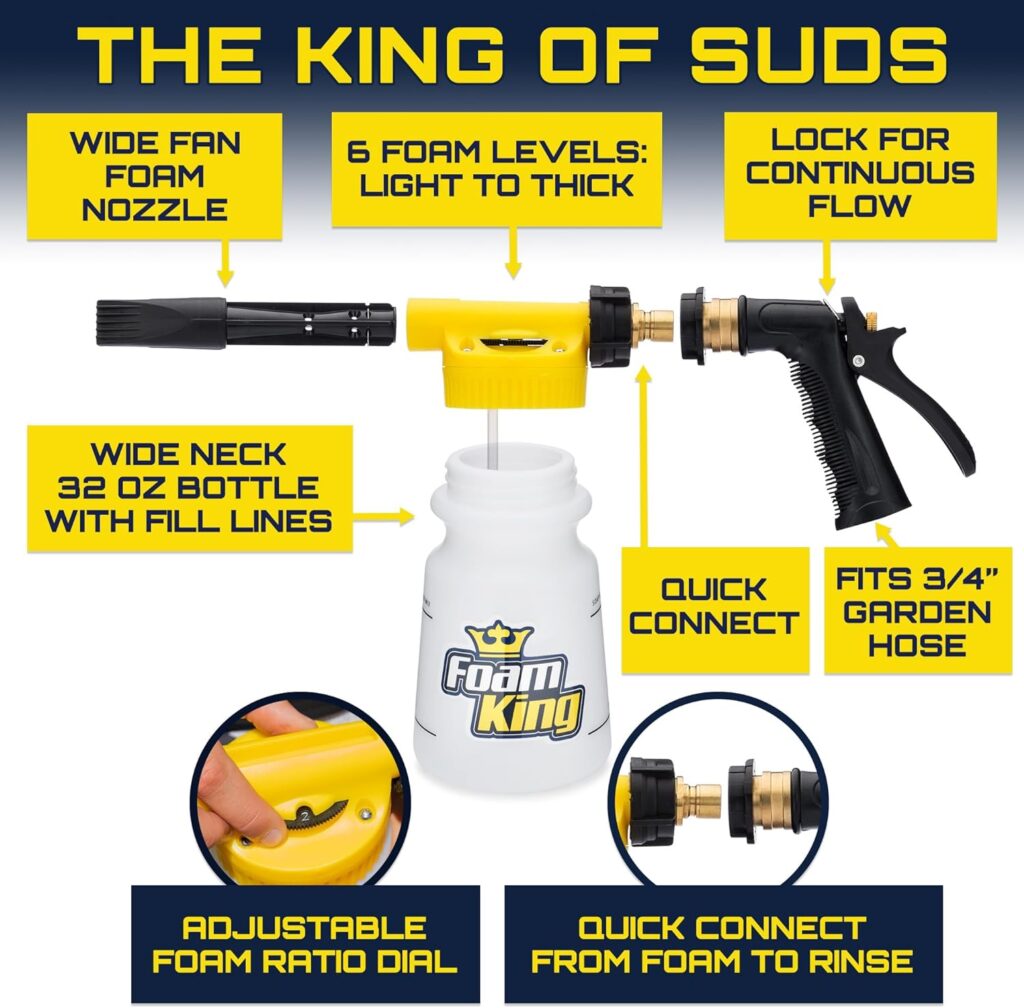
2-Dry Your Car Thoroughly
After washing your car, the next step is to dry it thoroughly to avoid water separation and scratch marks on the paint.
Water spots can be metals or contaminants in the water that can write into the paint and leave marks.
Rubbing paint with a dirty or abrasive towel can cause swirl marks that can cause micro-scratches. To avoid these problems, use a soft dry towel or chamois clean and gently on the paint.
Instead of pulling the towel or rubbing the paint, you should use a blotting or patting motion to dry the surface. Do not allow the water to evaporate on its own, as it can leave behind rust that can damage the paint.
You can use a vacuum cleaner or vacuum cleaner to remove excess moisture from hard-to-reach areas like glass, windows, and door frames.
3-Wax Your Car Regularly
Another step in caring for your car’s paint is regular waxing.
Waxing your car not only keeps it warm and smooth but also creates a protective barrier between the paint and the components inside.
This helps prevent damage from UV rays, dirt, and other contaminants that can cause softening and oxidation.
According to experts, at least twice a year, or more frequently if your car is exposed to extreme conditions such as high humidity, heat, pollution, and more.
To find the right wax, use a high-quality car wax that suits your vehicle’s paint type and shade.
Apply with a soft cloth or applicator tape, following the manufacturer’s instructions.
Be sure to work in small sections and pat the wax with a clean microfiber towel.
HOMEXCEL Microfiber Cleaning Cloth Black, 12 Pack Premium Microfiber Towels for Cars, Lint Free, Scratch-Free, Highly Absorbent, Reusable Cleaning Rags for Car, Household, Kitchen, 11.5″X11.5″
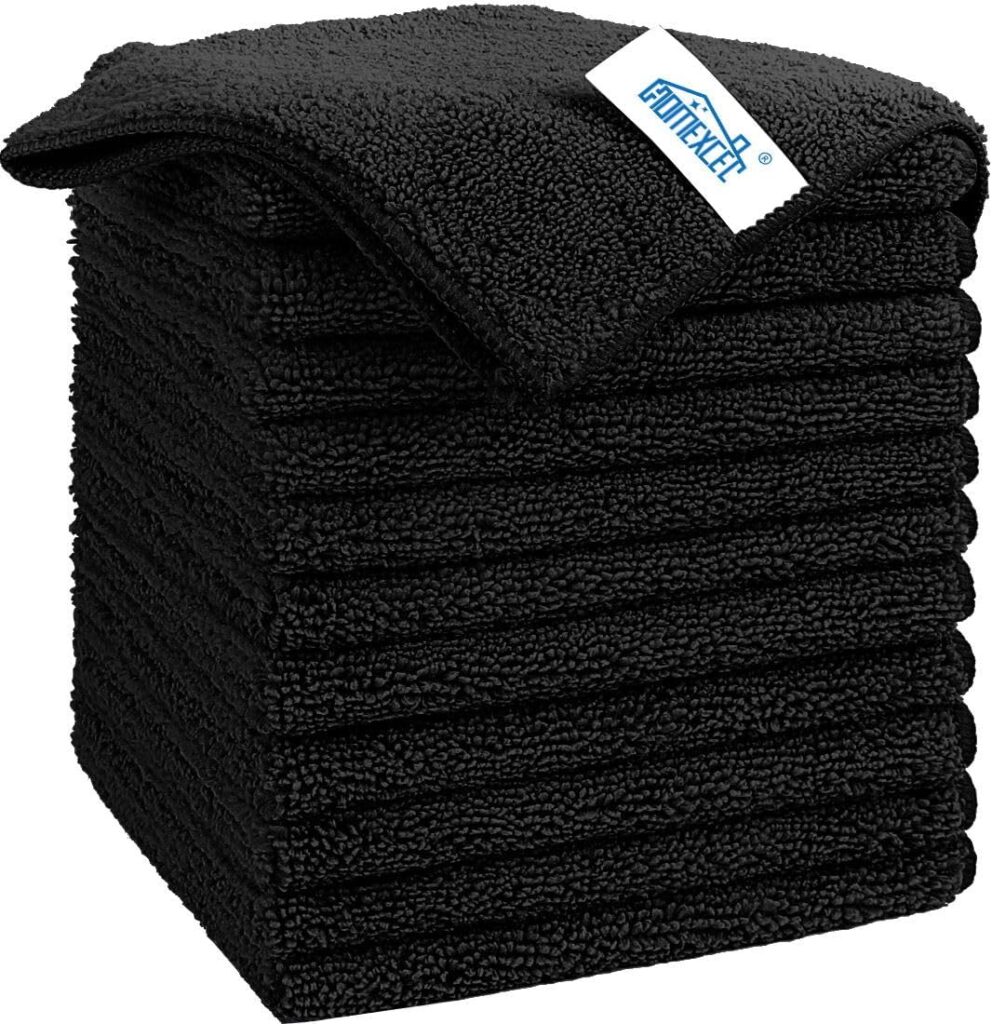
4-Park Your Car in a Shaded Area
Another way to take care of your car’s paint is to park it in a shaded area whenever possible.
Direct sunlight can cause your car’s paint to fade and oxidize over time, as UV rays can damage the paint’s chemical bonds and cause it to lose its color and shine To prevent this from happening, try to park your vehicle in a garage, parking lot or under a tree or structure blocking the sun.
If you can’t get to a shaded area, consider using a car cover to protect the paint from harmful sunlight.
Vehicle coatings can offer many benefits, including keeping your vehicle clean, preventing scratches, and saving paint.
But you need to choose a car cover that is breathable, waterproof, provides UV protection, and fits your car perfectly.
You should also make sure your car is clean and dry before installing the cover, as dirt or water can damage the underlying paint.
5-Avoid Parking Near Trees and Bushes for Car Paint Care.
Aside from the sun, another cause of paint damage is parking near trees and shrubs.
These expose your car to water, bird droppings, and other contaminants that can damage, scratch, or rust the paint.
The water can be especially difficult to remove, as it can bond with the paint and become sticky and sticky.
Bird droppings can also be acidic and harmful if paint is applied, especially if left too long.
If you can, try to park in an open area that is clear of trees and woody debris.
If you find water or bird droppings in your car, you should remove them immediately with a non-automotive cleaner and a soft cloth.
6-Be Careful When Washing Your Car.
Another important tip for car paint care is to be careful when washing your car.
Washing your car can help remove dirt and grime that can damage the paint, but if done incorrectly, it can lead to scuffs and scratches.
To avoid this, you should use a soft sponge or a washing machine designed for washing cars, with high piles that can catch dirt that you should not spray If you start from the top and work downwards, you should also use a gentle circular motion so that the top layer is cleaned.
Avoid using harsh chemicals or abrasives, such as brushes or detergents, which can damage the paint and cause micro-scratches.
Frequent sponge or mitt cleaning or preventing dirt buildup and cross-contamination.
Chemical Guys SPI220 Total Interior Cleaner and Protectant, Safe for Cars, Trucks, SUVs, Jeeps, Motorcycles, RVs & More, 128 fl oz (1 Gallon)
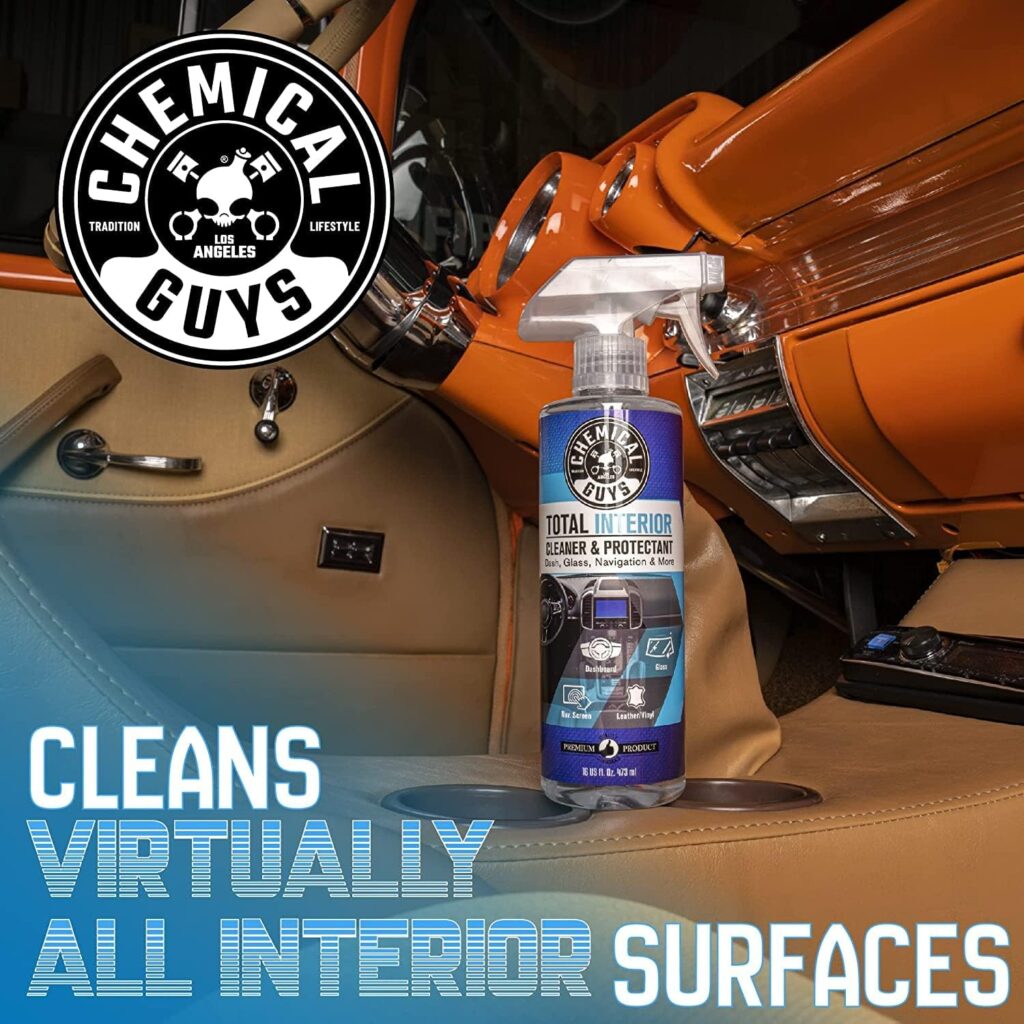
7-Use a Clay Bar to Remove Contaminants.
After washing and drying, you may notice that your car’s paint is still dull or pitted.
This means that there are contaminants that cannot be removed with soap and water, such as brake dust, industrial dust, or train dust.
These contaminants can seep into the paint and deteriorate over time.
To get rid of this contamination, you should use a clay stick at least twice a year, or more often if you are driving in a contaminated area.
An earth penalty is a soft, bending object that slides a greasy clean, and clean ceramic box into a small area of the throne and rubs it with the ceramic rod, using the face to apply the grease.
Roll and grind the clay stick several times to give it a clean appearance, preventing the dirt from getting back onto the paint.
Before moving on to the next piece, you need to wash and dry the pieces.
8-Touch Up Scratches and Chips.
Despite your best efforts, your car’s paint can be damaged or chipped over time due to accidents, vandalism, or road debris.
These imperfections can expose the metal underneath the paint, which can lead to rust and damage, underscoring the importance of diligent car paint care. To prevent this, you should use a touch-up paint kit that matches the color of your car to address them immediately.
This step is crucial in car paint care, as it prevents minor damages from escalating into more significant issues.
You can find these car paint care products online or at your local auto parts store, making it convenient to maintain your vehicle’s appearance. Before applying touch-up paint, the area should first be cleaned with a degreaser and a lint-free cloth, ensuring that the surface is prepared for the best possible repair—a fundamental step in car paint care.
Then use a brush or fine toothpaste to dab a few drops of paint into the scratches or creases following the damaged instructions, paying attention to the nuances of car paint care to achieve a seamless repair.
Avoid over-painting, as this can cause prominent spots or scarring, a reminder of the precision required in car paint care.
Let it dry for at least 24 hours before applying a clear coating to seal and protect the paint. This final step is vital in car paint care, as it not only seals the repair but also helps maintain the overall integrity and appearance of the vehicle’s paintwork.
Adam’s Mini Air Cannon – Handheld High Powered Filtered Car Wash Dryer Blower Sidekick | Dry Before Car Cleaning, Car Detailing, Car Wax, or Ceramic Coating | Auto Tool Kit Gift Boat RV Motorcycle

9-Regularly Inspect Your Car’s Paint for Car Paint Care.
Another step in car paint care is to regularly inspect your car’s paint for signs of wear and tear.
By doing this, you can catch any streaks, bruises, or fading areas in advance to prevent them from spreading or damaging.
You can use a flashlight or a magnifying glass to see any imperfections on the paint surface.
You can also feel with your hands how smooth or smooth the paint is.
If you notice damage, touch or wipe it off immediately, following the steps above.
To maximize your car’s paint protection and keep it looking its best, you may want to consider investing in a paint protection film or ceramic coating.
These are advanced features that can add some protection to your car’s paint, making it more resistant to scratches, stains, and fading.
They can enhance the look and shine of your car’s paint, making it look brighter and shinier.
However, these products can be pricey and need professional installation, so you need to weigh the costs and benefits before deciding to use them.
10- Avoid Automatic Car Washes for Car Paint Care.
The last thing you want to do with your car’s paint is put it through an idle car wash.
While these may seem easy and quick, they can do more harm than good to your car’s paint.
Harsh brushes and ineffective car washes can scratch and scratch the paint, causing scratches and other imperfections.
These can reduce the shine and luster of your paint, making it more susceptible to rust and scratches.
Instead of using an automatic car wash, opt for hand washing or a hands-free car wash.
Hand washing your car allows you to monitor the pressure, speed, and direction of fluid and maintenance, as well as identify any dirt or grime that requires extra attention Non-touch car wash car washes your car without touching the paint using high-pressure water and spray cleaning solution, This can prevent scratches and scratches but you should also wash and dry your car when car washing is not taken do not add after use, as detergents can leave residue and damage the paint.
11- Avoid Harsh Cleaners and Chemicals.
Another common mistake that can damage your car’s paint is using harsh cleaners and chemicals that are not designed for automotive use.
Cleaners, abrasives, or harsh chemicals can strip your car of its wax and clear protective layer, leaving the paint exposed and damaged They can also cause paint to be discolored, darkened, or mottled.
To avoid this, you should choose a pH-balanced detergent specially designed for automotive use.
These cleaners are designed to safely remove dirt and grime without damaging the paint.
You can find these repair kits online or at your local auto parts store.
Be sure to follow the manufacturer’s instructions and recommendations and test a small area before applying it to the entire vehicle.
ThisWorx Car Vacuum Cleaner – Car Accessories – Small 12V High Power Handheld Portable Car Vacuum w/Attachments, 16 Ft Cord & Bag – Detailing Kit Essentials for Travel, RV Camper
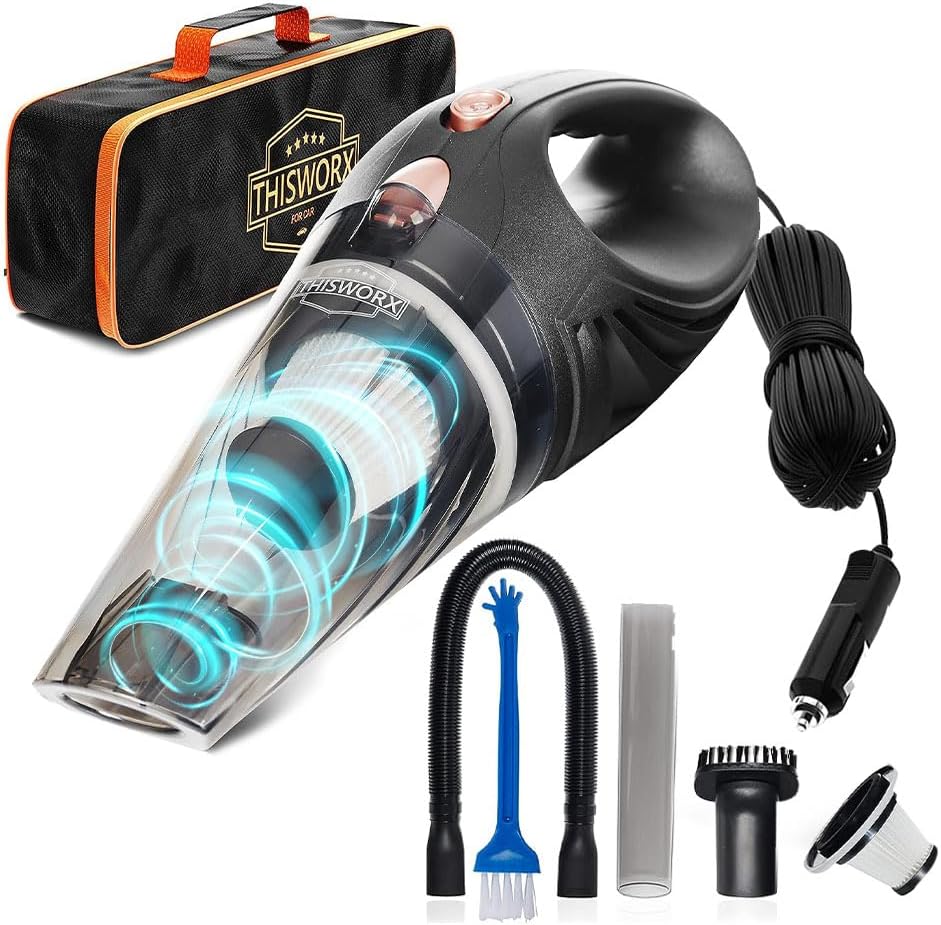
12- Use a Paint Protection Film or a Ceramic Coating for Car Paint Care.
Another tip for car paint care is to use a paint protection film (PPF) or ceramic coating to protect your car paint.
These are advanced features that can add some protection to your car’s paint, making it more resistant to scratches, stains, and fading.
PPF is a clear film applied to painted parts of your vehicle to protect against scratches, glass, and other damage caused by rocks, dust, and other road hazards PPF can also treat the fine lines and twists themselves, making them disappear.
Ceramic coatings, on the other hand, are liquid polymers that are applied to paint to provide a protective effect to repel water, dirt, and other contaminants Ceramic coatings can also thicken and gloss your car’s paint, making it look brighter and shinier greater than.
While both PPF and ceramic coatings can help keep your car’s paint from scuffing, warping, and scuffing and keep it looking like new for years to come, the price of these products can be expensive and expensive will need to be staffed, so you need to weigh the costs and benefits before deciding to use it.
13- Avoid Using Harsh Chemicals on Your Car’s Wheels.
In addition to paint, you should also take care of your car’s wheels as they can accumulate brake dust, dirt, and grime, which can be difficult to remove Brake dust is a mixture of metal particles and brake pad material that can stick to the wheels and brings rust and pits.
Dirt and grime can make your wheels look dull and dirty.
However, using harsh chemicals on your car wheels can damage the paint and cause paint discoloration or fading.
Some wheel cleaners such as bleach or ammonia can remove the protective coating and cause corrosion and oxidation of bare metal Instead opt for a gentle wheel washer designed specifically for automobiles and follow instructions carefully to avoid paint damage.
You can find it in the store. Make sure the cleaner is appropriate for your wheel type and material, such as chrome, aluminum, or steel.
Also, use a soft brush or sponge to gently scrub the discs with water.
Chemical Guys SPI22016 Total Interior Cleaner and Protectant, Safe for Cars, Trucks, SUVs, Jeeps, Motorcycles, RVs & More, 16 fl oz
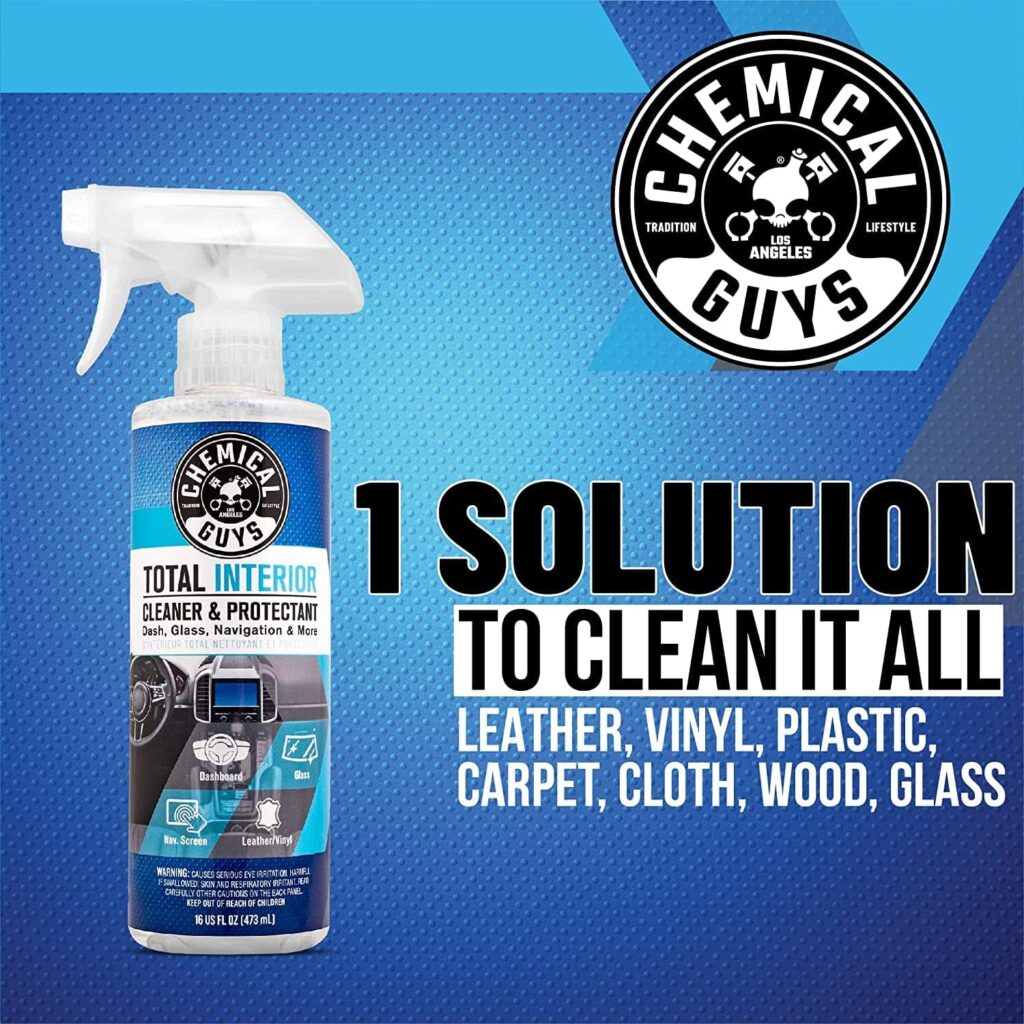
14- Store Your Car in a Garage or Covered Area.
One of the biggest enemies of your car’s paint is the weather.
Your car’s paint can fade and deteriorate over time due to factors such as rain, snow, and UV rays.
Rain and snow can contain acidic dirt that can eat away at the paint and cause damage.
UV rays can break down the chemicals in the paint and cause loss of color and shine.
To prevent this, consider storing your vehicle in a garage or covered area when not in use.
This will protect your car’s paint from weathering, fading, and UV damage.
If you do not have a garage or covered area, you can also use a car cover to protect your vehicle. But you need to make sure that the car cover is breathable, waterproof, and fits your car properly.
15- Apply a Coat of Wax or Sealant for Car Paint Care.
Another tip for car paint care is to apply a wax coat or sealant to your car paint.
Waxing or locking your car can also help prevent stray UV rays, as well as increase the shine and shine of your paint.
This is because the wax or sealant forms a protective barrier that helps prevent UV rays from penetrating the paint and preventing it from fading.
According to experts, applying a wax or sealed wax coat or sealant at least twice a year, or more often if your vehicle is exposed to extreme conditions such as high humidity, heat, and pollution, you need to paint the type and color of a quality product that suits your vehicle.
Also, follow the manufacturer’s instructions and use a soft cloth or applicator pad to spread the product evenly over the paint.
Be sure to work in small sections and wrap the product with a clean microfiber towel.
AstroAI Windshield Cleaner, Car Windshield Cleaning Tool Inside with 4 Reusable and Washable Microfiber Pads and Extendable Handle Auto Glass Wiper Kit, Blue
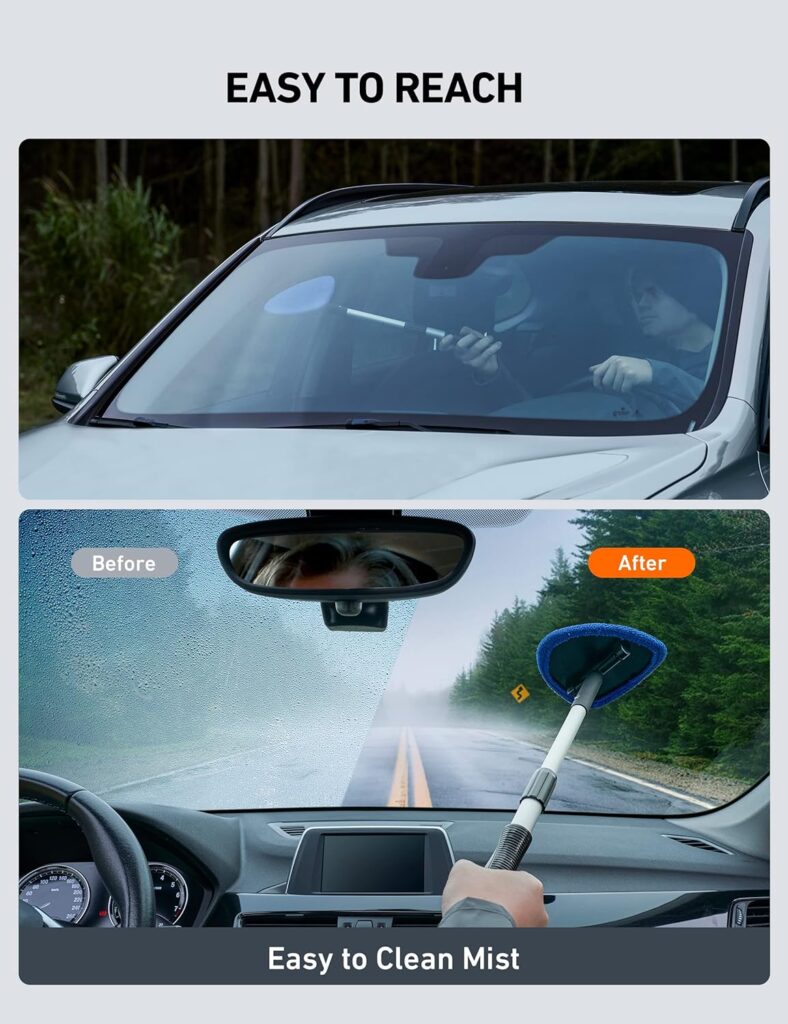
16- Use a Microfiber Towel to Dry Your Car.
Another step in washing your car is to shake it thoroughly to prevent water from forming streaks and scratches on the paint. This precaution is vital in maintaining the vehicle’s aesthetic and protecting the paintwork. But you need to be careful about what you use to dry your car because some towels can wear out and ruin the paint, causing swirls and scratches. Swirls and scratches are tiny scratches that can reduce the shine and clarity of your paint, making it look dull and worn out, emphasizing the need for proper car paint care techniques.
To avoid this, you should dry your car with a microfiber towel. Microfiber towels are gentle and won’t scratch your car’s paint, significantly reducing the risk of a thick towel or paper towel scratching its surface. This method is another step in ensuring the longevity and beauty of your car’s paint. Microfiber towels are also highly absorbent and can dry your car faster and more efficiently, underscoring their role in effective car paint care.
When drying, a blotting or patting motion should be used on the paint’s surface, a technique that aligns with the best practices in car paint care. This method prevents the towel from pulling or rubbing the paint in a way that could introduce scratches. Moreover, it is recommended to use a clean, dry towel for every part of the car, as wet or dirty towels can leave residue or dirt and ruin the paint. This attention to detail is crucial in car paint care, ensuring that each area is treated with the care it deserves to maintain the vehicle’s pristine condition.
17-Apply a Paint Protection Film or a Ceramic Coating.
Another tip for car paint care is to apply a paint protection film (PPF) or ceramic coating to your car’s paint.
These are advanced features that can add some protection to your car’s paint, making it more resistant to scratches, stains, and fading.
PPF is a clear film applied to painted parts of your vehicle to protect against scratches, glass, and other damage caused by rocks, dust, and other road hazards PPF can also have heat treat the fine lines and twists themselves, making them disappear.
Ceramic coatings, on the other hand, are liquid polymers that are applied to paint to provide a protective effect to repel water, dirt, and other contaminants Ceramic coatings can also thicken and gloss your car’s paint, making it look brighter and shinier greater than.
While both Paint Protection Film (PPF) and ceramic coatings can help keep your car’s paint from scuffing, warping, and scuffing, thereby keeping it looking like new for years to come, it’s important to note that the price of these products can be expensive. Investing in such car paint care solutions will require a considerable budget, so you need to weigh the costs and benefits before deciding to use them.
Car paint care, including the use of PPF and ceramic coatings, not only protects the aesthetic appeal and integrity of your vehicle’s exterior but also can significantly enhance its resale value.
However, the initial expense and the need for professional application are factors to consider. Assessing the longevity, durability, and protective qualities of these treatments against their cost will help you make an informed decision on the best way to maintain and preserve your car’s paint finish.
Chemical Guys CWS20916 Swift Wipe Sprayable Waterless Car Wash, Easily Clean – Just Spray & Wipe, Safe for Cars, Trucks, Motorcycles, RVs & More, 16 fl oz
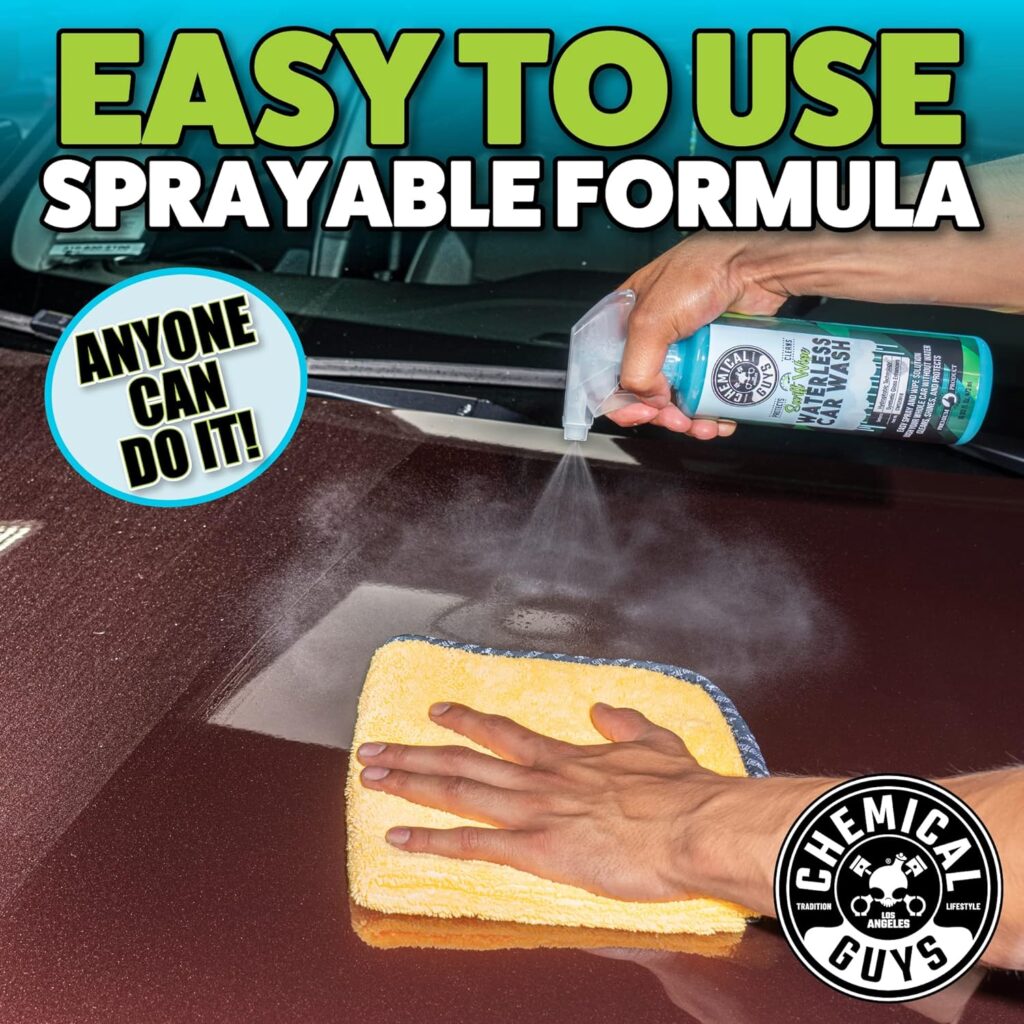
In the end: Car Paint Care
To maintain your car’s paint in excellent condition, you should follow these simple tips and techniques.
Wash and wax your car regularly, and park it away from potential hazards that could damage the paint.
By taking good care of your car, you can preserve its shine and express your style and taste.





Pingback: Car Care Packages: Are They Worth It in 2024? - MYTHREX